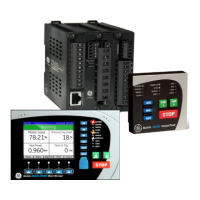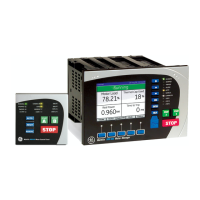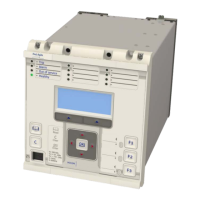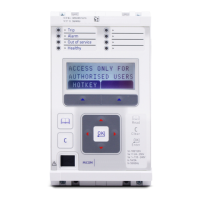6 THREE-TERMINAL SCHEMES
Products that have two protection communications channels fitted can be applied to the protection of three-
terminal applications.
By appropriate model selection, current differential protection can be provided for two-terminal or three-terminal
feeders. A naming convention is used featuring the terms ‘Local’ and ‘Remote’. ‘Local’ is applied to the device being
described. ‘Remote’ refers to a connected device. For a two-terminal application, the remote device is referenced
in the MEASUREMENTS 3 column as ‘Remote 1’. When a third terminal is included it is referenced as ‘Remote 2’.
Sometimes what is expected to be a three-terminal scheme may need to operate as a two-terminal scheme (this
may be due to a line end being taken out for maintenance, or it may be that the line end has still to be added). In
such a case, it is possible to reconfigure the protection devices to perform as a two-terminal application. The
device that has been configured-out can be removed from the system without any alarms being raised. This
reconfiguration can be done from any of the terminals in the protection scheme, but it is generally performed at
the terminal being configured out, as it requires an interlock that is associated with the isolator at that terminal. If
you intend to use this feature you might need to create and use customised PSL files and the product must be set
up for three-terminal operation.
To reconfigure a scheme from three-terminal to two-terminal you use the Re-Configuration setting in the PROT
COMMS/IM64 column. Before you can change a configuration, two interlocking criteria need to be satisfied: The
Inhibit C Diff and Recon Interlock DDB signals (455, 456 respectively) need to be asserted. The Inhibit C Diff DDB
signal is mapped by default to one of the opto-isolated inputs and is used to ensure stability during the
reconfiguration. According to the particular model being used, the Recon Interlock DDB signal might not be
mapped by default. To reconfigure a scheme from three-terminal to two-terminal, the DDB signal must be mapped
to an opto-isolated input using the PSL. This signal is intended to be connected to reflect the state of the
switchgear at the terminal that is being taken out of service (The rationale being that if the line is open, current
does not flow and so the scheme can be protected as a two-terminal line).
Note:
The line end to be ‘configured out’ must be open before issuing a reconfiguration command. If this is not done, any current
flowing in or out of the ‘configured out’ end will be seen as fault current and when the Inhibit C Diff’input is removed, it might
cause the other devices to operate.
Reconfiguration is only permitted if all three devices are energised and communicating correctly with each other.
Four values are available for the Re-Configuration setting:
● Three Ended (stay as three-ended)
● Two Ended(L&R1) (Local + Remote 1)
● Two Ended(L&R2) (Local + Remote 2)
● Two Ended(R1&R2) (Remote 1 + Remote 2)
If the reconfigured scheme incorporates the local device, the trip outputs of the differential protection will continue
to be inhibited until the Inhibit C Diff signal at the local device is cleared. If the new reconfiguration scheme only
incorporates the remote devices, the differential protection at the remote devices are not inhibited because they
will ignore all commands from the local device unless it is a command for reconfiguration.
Setting the Re-Configuration setting to Three Ended at any terminal will restore three-terminal operation
without regard to the status of the Inhibit C Diff DDB signal or the Recon Interlock DDB signal.
The operation of the change configuration logic is as follows:
● The reconfiguration setting is changed.
● The product detects the change in setting and attempts to implement the new setting.
If the current configuration is Two-Ended and the new setting is also Two-Ended, the device blocks the change and
issues a configuration error alarm.
P543i/P545i Chapter 6 - Current Differential Protection
P54x1i-TM-EN-1 109
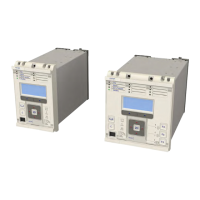
